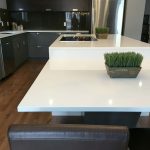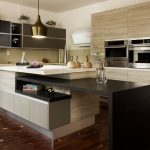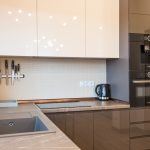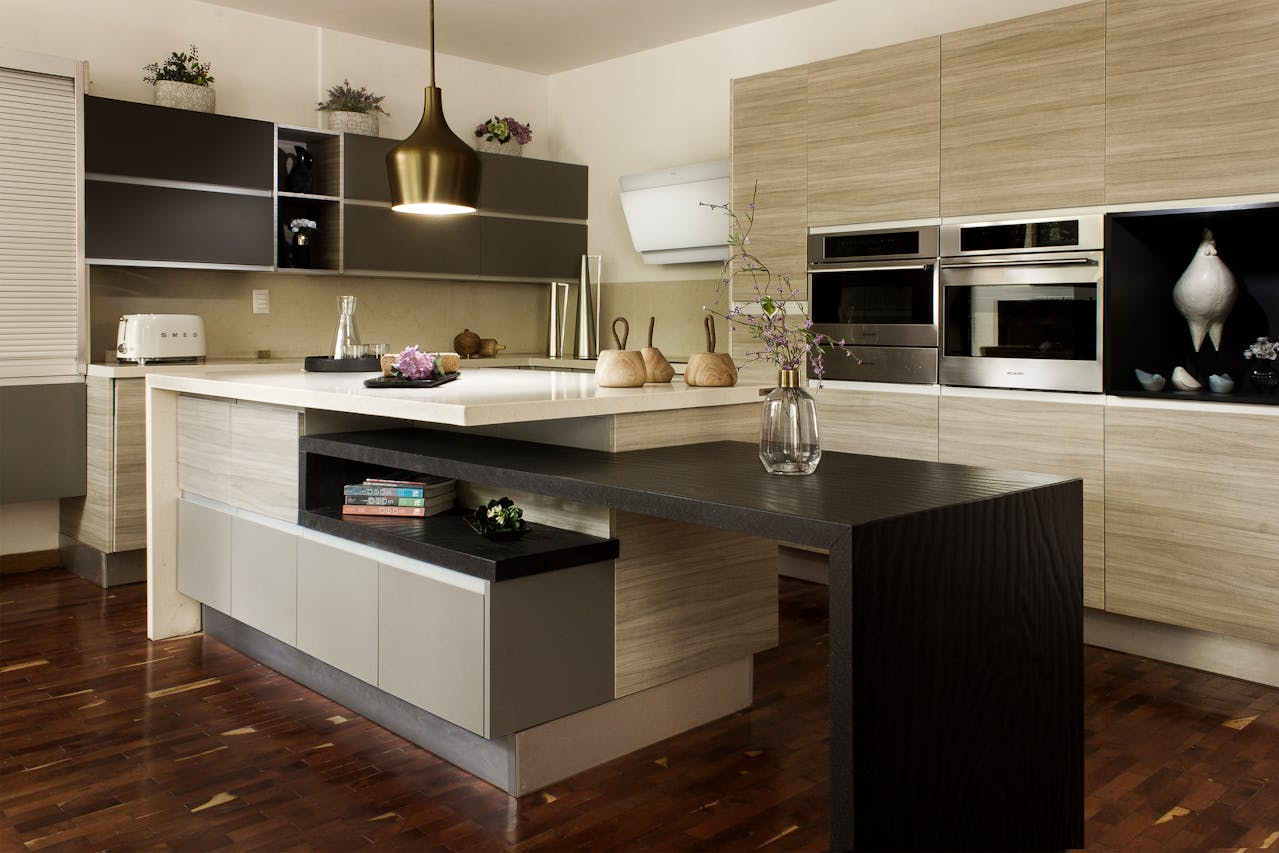Imagine walking into a kitchen. What do you notice first? Is it the style of the cabinets, the type of flooring, or perhaps the appliances? While all these features are critical, there is one element that can significantly impact your appetite and eating patterns: the color scheme. From the paint on the walls to the color of the dishes, the hues you surround yourself with while eating and preparing meals can subtly influence your food choices and cravings.
The Science Behind Colors and Appetite
What’s the connection between color and appetite? It might be more profound than you think. As many scholars have studied, colors can trigger specific psychological responses. This phenomenon isn’t limited to influencing our emotions and mood; it can also affect our physical responses, including our appetite.
Also read : How can you utilize under-cabinet space for storing healthy snacks?
The concept is not entirely new. For years, restaurant owners have been using strategic color schemes to enhance the dining experience and influence customers’ food choices. But how does it work?
Red: The Appetite Stimulant
If you’ve ever wondered why fast-food chains like McDonald’s, KFC, and Pizza Hut predominantly use red in their logos and interiors, here’s your answer: red is known to stimulate the appetite. Red is a warm color that’s associated with excitement and passion. When we see it, our heart rate increases slightly, and our bodies prepare for action – in this case, eating.
Also read : What are the best types of countertops for a health-focused kitchen?
Green: The Healthy Color
The color green is often associated with health and wellness. When you see it in the kitchen or any food-related setting, it can subconsciously remind you of fresh, healthy foods like vegetables and fruits. As a result, you might be more inclined to choose healthier options when cooking or eating.
Yellow and Orange: The Feel-Good Colours
Yellow and orange are warm, comforting colors often related to happiness and positivity. These colors can make your kitchen feel welcoming and cozy, encouraging you to spend more time there. Therefore, kitchens painted in these hues might indirectly lead to more frequent snacking or larger portion sizes.
Blue: The Appetite Suppressant
In contrast to red, blue is known to suppress the appetite. There aren’t many naturally occurring blue foods, which might explain our body’s lack of appetite response to this color. If you’re watching your weight or trying to eat less, using blue in your kitchen design might be helpful.
How to Use This Knowledge in Your Kitchen Design
Now that we understand the influence of colors on appetite, how can we apply this knowledge in our kitchen design? Here are some ideas.
When planning your kitchen color scheme, consider your culinary habits and goals. If you’re trying to eat healthier or lose weight, incorporating more greens and blues could be beneficial. On the other hand, if you’re looking to stimulate your appetite or make your kitchen a more social space, choose reds, yellows, or oranges.
Also, remember that it’s not just about wall paint. Consider the color of your dishes, utensils, and even your tablecloth. These elements can also contribute to the overall color scheme and influence your appetite in subtle ways.
Important Considerations
While the science behind colors and appetite is fascinating, it’s essential to remember that many other factors can influence our eating habits. Stress, sleep, physical activity, and overall mental health can significantly impact our appetite and eating patterns.
Moreover, our individual preferences and cultural background can affect how we perceive and respond to colors. Some people might find a blue kitchen calming and soothing, while others might perceive it as cold and uninviting.
In conclusion, while the color scheme of your kitchen can potentially influence your appetite and eating patterns, it’s only one piece of the puzzle. Consider it as part of a broader approach to creating a kitchen that supports your health and wellbeing goals. It’s always best to create a space that feels comfortable and enjoyable for you and your family.
Final Thoughts
Colors are a powerful tool that can influence our perceptions and behaviors. The color scheme of your kitchen, from the paint on the walls to the colour of your dishes, can subtly influence your appetite and food choices. By understanding the science behind this phenomenon, we can make informed decisions when designing and decorating our kitchens. However, it’s always important to remember that personal preferences and other lifestyle factors also play a significant role in our eating habits.
The Psychological Impact of Colors in Dining Spaces
A look into the psychological impact of colors reveals the potential power that the choice of color scheme holds in influencing our appetites. Although more research is needed, initial findings suggest that the color scheme of your kitchen or dining area can subtly affect your cravings and food choices, altering your eating patterns in the process. According to scholars examining this phenomenon on Google Scholar, the color of a room can evoke certain emotional responses that may, in turn, influence our physical responses, such as our appetite.
This concept has long been applied in the marketing strategies of various businesses. Fast food chains, coffee shops, and fast casual restaurants are known to utilize color schemes that are meant to stimulate appetite and create a more appealing dining experience. Taking this into consideration, the color of your kitchen and dining area might be more important than you think.
For instance, did you ever wonder why so many restaurants use red in their logo or interior design? The color red, associated with excitement and passion, has been found to stimulate appetite. Therefore, having red elements in your kitchen might lead you to eat more. On the contrary, the color blue has been linked to a decrease in appetite. Thus, if you’re considering a new color palette for your kitchen, you might want to take into account your personal health and dietary goals.
How Colors Can Alter the Perception of Food and Drink Flavor
Interestingly, the color of your kitchen is not the only factor that can sway your appetite and eating habits. According to various studies, the color of the food and drink we consume can also have a profound impact on our flavor perception.
For instance, researchers have found that people often associate certain colors with specific tastes. Red and orange are typically linked to sweet and fruity flavors, while green is associated with healthy or ‘fresh’ tastes. This color-flavor association can influence our perception of taste and our food choices.
What’s more, the color of the dishware can also affect our flavor perception. For example, a study found that hot chocolate tasted sweeter and more aromatic when served in orange or cream-colored cups compared to white or red ones. Therefore, when you’re deciding on the color of your dishes, consider how it might affect the taste of your meals.
Concluding Remarks
In conclusion, the color scheme of your kitchen can have a subtle yet significant impact on your appetite and eating habits. From the paint on your walls to the color of your dishes, every hue choice can influence your food preferences and flavor perception. By taking into account the psychological impact of colors, you can design a kitchen that aligns with your dietary goals and enhances your dining experience.
However, while colors can play a role in shaping our eating behaviors, it’s important to bear in mind that many other factors influence our appetite and food choices. Each individual’s unique background, lifestyle, and personal preferences also significantly impact these behaviors. Therefore, when designing your kitchen, prioritize creating an environment that feels comfortable and inviting for you and your guests.
Finally, remember that all these observations about colors and appetite are part of a promising but largely unexplored field of research. While the color scheme could be a tool to help you achieve your dietary goals, it should not replace a balanced diet and lifestyle. Future research might shed more light on these fascinating connections, but for now, enjoy exploring different scheme colors and the flavors they bring out in your meals!






